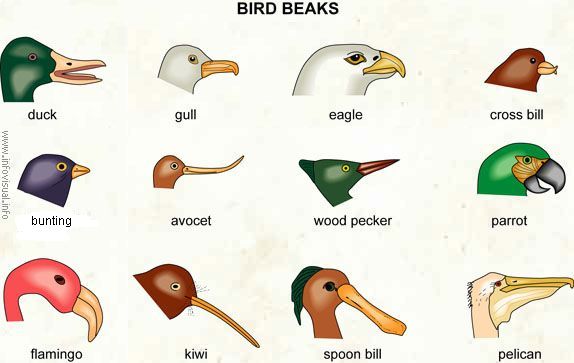The shape of a bird’s beak matches its lifestyle.
- Raptors have sharp, hooked beaks for tearing meat.
- Crossbill beaks have crossed tips so they can pull seeds easily out of pine cones.
- Avocets have long, thin, upturned bills because they skim the water with their lower mandibles to capture aquatic food.
- Conversely, flamingos have wide downturned bills because they sweep the water with their upper mandibles. They turn their heads upside down to eat.
Why do ducks have long bills with serrated edges? Why do woodpeckers have pointy beaks? Why do pelicans have pouches?
The answers are easy if you know something about their lifestyles and what they eat.
See if you can figure out the reasons for the rest of the beak shapes shown above.
Keep in mind the illlustration is fanciful. Our spoonbills don’t have orange-brown heads and our buntings don’t have yellow eyes and bills.
(Frankly I couldn’t refrain from changing the title of the bunting picture. It was originally labeled “night hawk” but the beak shape is so unlike a common nighthawk’s that I couldn’t stand it.)
(image from www.infovisual.info. The name “night hawk” was altered to “bunting.” Click on the image to see the original.)
